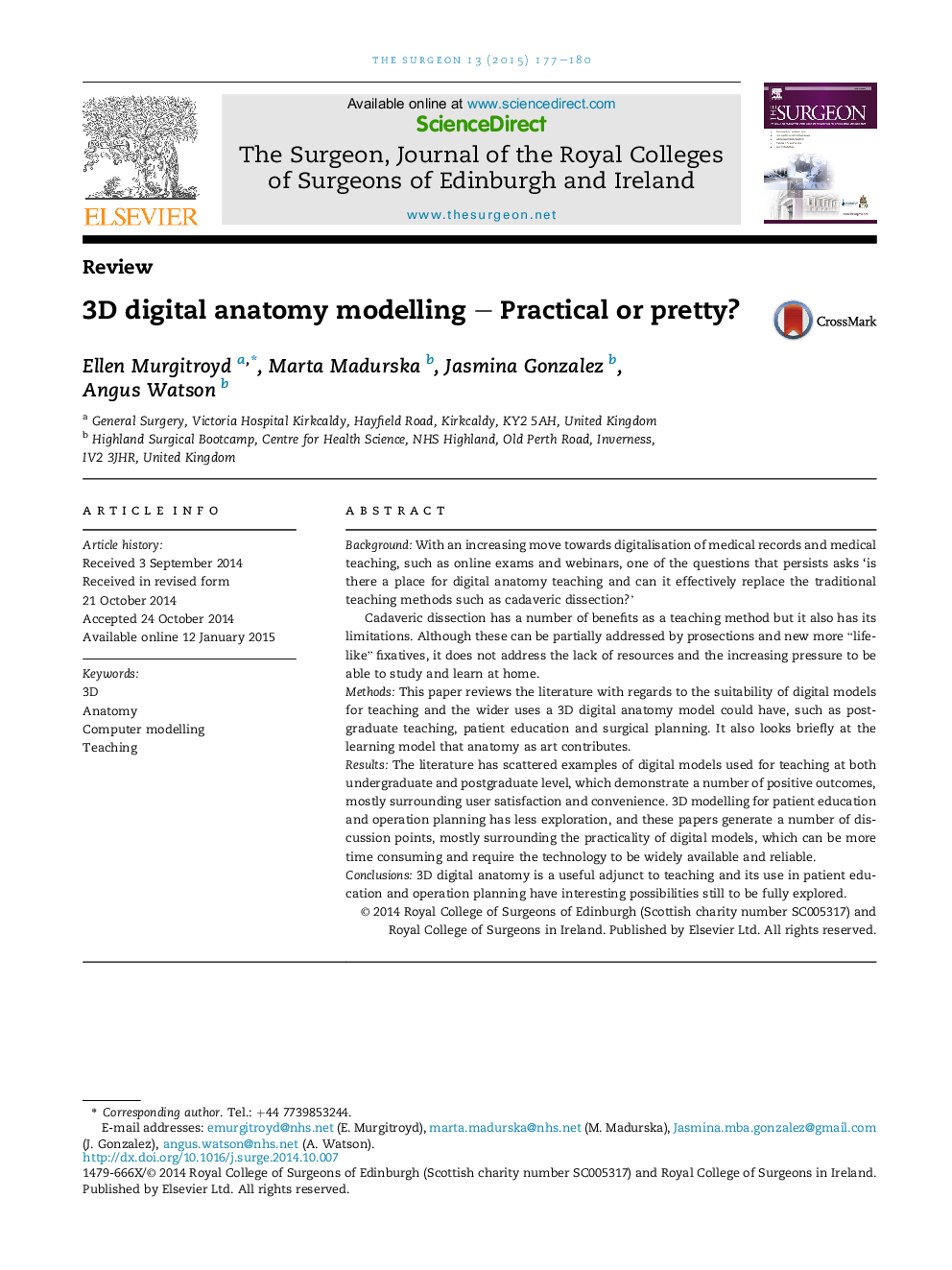| Article ID | Journal | Published Year | Pages | File Type |
|---|---|---|---|---|
| 3178606 | The Surgeon | 2015 | 4 Pages |
BackgroundWith an increasing move towards digitalisation of medical records and medical teaching, such as online exams and webinars, one of the questions that persists asks ‘is there a place for digital anatomy teaching and can it effectively replace the traditional teaching methods such as cadaveric dissection?’Cadaveric dissection has a number of benefits as a teaching method but it also has its limitations. Although these can be partially addressed by prosections and new more “life-like” fixatives, it does not address the lack of resources and the increasing pressure to be able to study and learn at home.MethodsThis paper reviews the literature with regards to the suitability of digital models for teaching and the wider uses a 3D digital anatomy model could have, such as postgraduate teaching, patient education and surgical planning. It also looks briefly at the learning model that anatomy as art contributes.ResultsThe literature has scattered examples of digital models used for teaching at both undergraduate and postgraduate level, which demonstrate a number of positive outcomes, mostly surrounding user satisfaction and convenience. 3D modelling for patient education and operation planning has less exploration, and these papers generate a number of discussion points, mostly surrounding the practicality of digital models, which can be more time consuming and require the technology to be widely available and reliable.Conclusions3D digital anatomy is a useful adjunct to teaching and its use in patient education and operation planning have interesting possibilities still to be fully explored.
